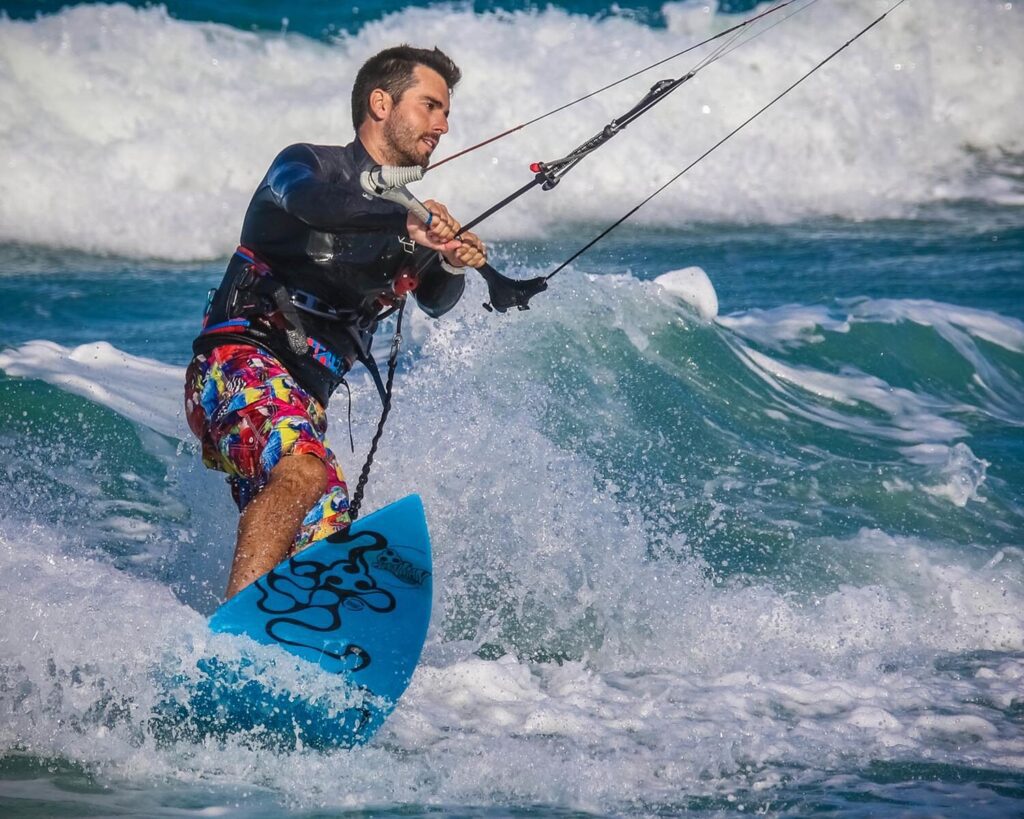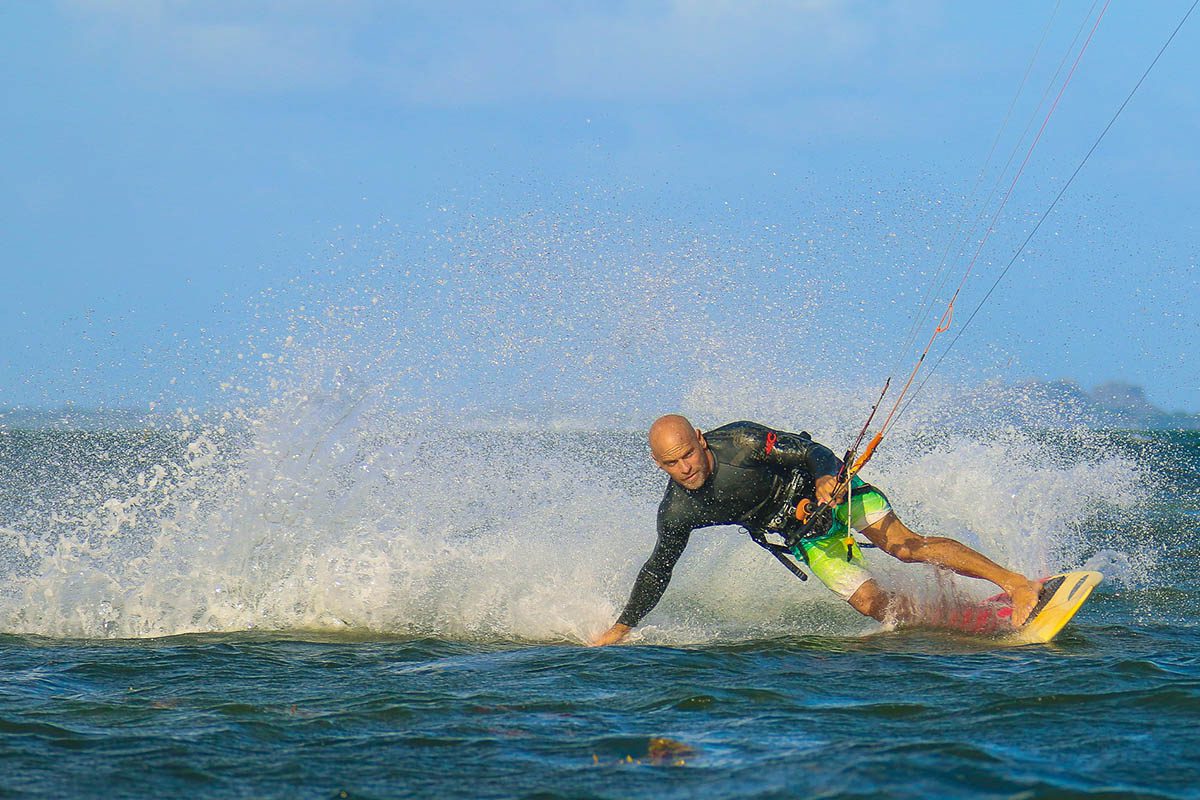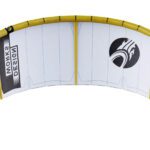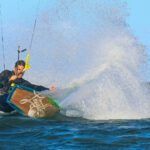
Kitesurfing Common Mistakes: What are the common mistakes to avoid in kitesurfing?
Outline.
I. Introduction – Definition of kitesurfing – Brief overview of kitesurfing as a popular water sport.
II. Importance of Avoiding Common Mistakes in Kitesurfing – Safety concerns – Impact on learning progress – Avoiding accidents and injuries.
III. Common Mistakes to Avoid in Kitesurfing A. Choosing the wrong kite size B. Poor body positioning and balance C and not paying attention to wind conditions D. Neglecting safety precautions E. Overconfidence and lack of proper training F. Incorrect kite control and steering G. Ignoring weather and water conditions H. Inadequate equipment maintenance I. Not respecting the right of way rules J. Ignoring signals from other kitesurfers K. Failing to assess own abilities accurately L. Lack of situational awareness M. Poor communication with fellow kitesurfers N. Ignoring warnings and guidelines from instructors.
IV. Tips for Avoiding Common Mistakes – Importance of taking lessons from certified instructors – Properly assessing wind and weather conditions – Regular equipment maintenance – Adhering to safety precautions and right of way rules – Building skills progressively and avoiding overconfidence.
V. Conclusion – Recap of common mistakes to avoid in kitesurfing – Emphasis on safety, awareness, and proper training.
Article.
Kitesurfing Common Mistakes: What are the common mistakes to avoid in kitesurfing?
Kitesurfing, also known as kiteboarding, is an exhilarating water sport involving riding a board propelled by a kite attached to a control bar. It has gained immense popularity recently due to its adrenaline-pumping nature and the freedom it offers. However, kitesurfing has its fair share of risks, like any extreme sport. To fully enjoy the thrill of kitesurfing, it is crucial to avoid common mistakes that can lead to accidents, injuries and hindered learning progress. In this article, we will explore the most common mistakes to avoid in kitesurfing and provide tips on how to enjoy a safe and fulfilling kitesurfing experience.
Importance of Avoiding Common Mistakes in Kitesurfing.
Kitesurfing requires physical skills, technical knowledge, and situational awareness. Failing to avoid common mistakes can have severe consequences regarding safety and the ability to progress in the sport. Here are some reasons why avoiding common errors in kitesurfing is of utmost importance:
Safety concerns:
Kitesurfing involves working with powerful kites and riding at high speeds, which can be dangerous if not done correctly. Common mistakes such as incorrect kite control, poor body positioning, and neglecting safety precautions can result in accidents, collisions with obstacles or other kitesurfers, and injuries.
Impact on learning progress:
Kitesurfing Common Mistakes: Learning to kitesurf requires time, effort, and practice. Making mistakes repeatedly can hinder learning progress, leading to frustration and a lack of motivation. Identifying and rectifying common mistakes early on is essential to avoid forming bad habits that can be difficult to break later.
Avoidance of accidents and injuries:
Kitesurfing accidents can range from minor cuts and bruises to severe injuries such as broken bones, dislocations, and concussions. By avoiding common mistakes, kitesurfers can significantly reduce the risk of accidents and injuries, ensuring a safe and enjoyable experience on the water.
Common Mistakes to Avoid in Kitesurfing.
Kitesurfing involves various skills and techniques that must be executed correctly to ensure a safe and enjoyable experience. Let’s take a look at some of the most common mistakes to avoid in kitesurfing:
Choosing the wrong kite size:
Selecting the wrong kite size for the wind conditions can be a critical mistake. A kite that is too big for the wind can result in a lack of control and difficulty maneuvering, while a kite that is too small can lead to insufficient power and difficulty staying upwind. Choosing the right kite size based on the wind conditions and your skill level is essential to ensure a smooth and safe kitesurfing session.
Poor body positioning and balance:
Maintaining proper body positioning and balance is crucial in kitesurfing. Failing to distribute your weight correctly on the board, leaning too far back or forward, or not bending your knees can affect your stability and control over the kite. Practicing and developing good body positioning and balance is essential to enhance your power and strength while riding.

Not paying attention to wind conditions:
Wind conditions play a vital role in kitesurfing. Ignoring or underestimating wind changes can result in accidents and injuries. It’s essential to constantly monitor the wind conditions, including wind speed and direction, gusts, and shifts, and adjust your kite control and riding accordingly.
Neglecting safety precautions:
Safety should be a top priority in kitesurfing. Refrain from taking safety precautions such as wearing the proper safety gear, not correctly attaching the safety leash, and ignoring safety guidelines can result in accidents and injuries. Always follow safety guidelines, wear a helmet, impact vest, and leash, and be aware of your surroundings to ensure a safe kitesurfing experience.
Overconfidence and lack of proper training:
Overconfidence and attempting advanced maneuvers with proper training can be safe in kitesurfing. It’s important to progress gradually, take lessons from certified instructors, and practice essential skills before attempting more advanced maneuvers. Lack of proper training and overconfidence can lead to accidents, injuries, and hindered learning progress.
Incorrect kite control and steering:
Proper kite control and steering are crucial in kitesurfing. Failing to control the kite properly, not understanding the wind window, or oversteering can result in loss of control, crashes, and accidents. Practicing and developing reasonable kite control and steering skills is essential to ensure smooth and safe riding.
Ignoring weather and water conditions:
Weather and water conditions can significantly impact kitesurfing. Ignoring factors such as tides, currents, waves, and weather changes can result in accidents and injuries. Always be aware of the weather and water conditions, and adjust your riding accordingly to ensure safe and enjoyable kitesurfing sessions.
Inadequate equipment maintenance:
Proper equipment maintenance is crucial in kitesurfing. Regularly checking and maintaining your kite, bar, lines, and board can result in equipment failure, loss of control, and accidents. It’s essential to regularly inspect, clean, and maintain your equipment to ensure safe and reliable performance.
Not respecting the right of way rules:
Like any other water sport, kitesurfing has right-of-way rules to ensure safety and orderliness. Respecting the right-of-way rules, such as giving way to other kitesurfers or watercraft, not yielding to riders on starboard tack, or not keeping a safe distance, can result in collisions, accidents, and injuries. Always adhere to the right-of-way rules and respect other riders on the water.
Ignoring signals from other kitesurfers:
Communication and awareness of other kitesurfers on the water are crucial for safety. Ignoring signals, gestures, or warnings from other kitesurfers can lead to accidents and collisions. It’s essential to pay attention to the signs and gestures of other riders, such as hand signals for directions or warnings about potential hazards, and respond accordingly to avoid any mishaps.
Poor self-rescue skills:
Self-rescue skills are essential in kitesurfing, as unforeseen situations can arise on the water. Failing to properly self-rescue in case of equipment failure, loss of wind, or other emergencies can be dangerous. Learning and practicing self-rescue techniques is crucial to ensure you can safely and effectively handle unexpected situations.
Not knowing your limits:
Pushing yourself beyond your skill level and not knowing your limits can result in accidents and injuries. It’s essential, to be honest about your skill level and not attempt maneuvers or conditions beyond your capabilities. Gradually progress at your own pace and prioritize safety over taking unnecessary risks.
Poor body posture while crashing:
Crashing is a part of kitesurfing, but poor body posture during a crash can result in injuries. Failing to protect your head, extending your arms or legs during a collision, or not releasing the kite’s control bar can lead to severe accidents. Learning and practicing proper body posture during crashes is essential to minimize the risk of injuries.
Neglecting proper warm-up and stretching:
Like any physical activity, kitesurfing requires proper warm-up and stretching to prevent injuries. Refraining from neglecting warm-up exercises and stretching can result in muscle strains, sprains, or other damage. It’s crucial to warm up your muscles, joints, and tendons before hitting the water to ensure your body is prepared for the physical demands of kitesurfing.
Not checking equipment before each session:
Please thoroughly check your equipment before each kitesurfing session to avoid equipment failure or malfunction. Not checking the condition of your kite, bar, lines, harness, and board can lead to accidents and loss of control. Always take the time to inspect your equipment before each session to ensure it’s in proper working order.
Lack of situational awareness:
Maintaining situational awareness is vital in kitesurfing. Failing to be aware of your surroundings, including other kitesurfers, watercraft, obstacles, and changing conditions, can lead to accidents and collisions. It’s essential to constantly assess your environment, be vigilant, and adjust your riding to ensure a safe kitesurfing experience.
In conclusion, kitesurfing is an exhilarating water sport that requires proper skills, knowledge, and awareness to ensure a safe and enjoyable experience. Avoiding common mistakes such as choosing the wrong kite size, poor body positioning and balance, neglecting safety precautions, overconfidence, incorrect kite control, ignoring weather and water conditions, inadequate equipment maintenance, not respecting the right of way rules, ignoring signals from other kitesurfers, poor self-rescue skills, not knowing your limits, poor body posture during crashes, neglecting warm-up and stretching, not checking equipment before each session, and lack of situational awareness can significantly reduce the risk of accidents and injuries in kitesurfing.
(FAQs).
Q: How important is choosing the right kite size in kitesurfing? A: Choosing the right kite size is crucial in kitesurfing as it directly affects your control and maneuverability on the water. Using the wrong kite size can result in a lack of control and stability, making it challenging to perform maneuvers safely and efficiently.
Q: What are some common mistakes to avoid in kitesurfing? A: Some common mistakes to avoid in kitesurfing include choosing the wrong kite size, poor body positioning and balance, neglecting safety precautions, overconfidence, incorrect kite control, ignoring weather and water conditions, inadequate equipment maintenance, not respecting the right of way rules, ignoring signals from other kitesurfers, poor self-rescue skills, not knowing your limits, poor body posture during crashes, neglecting warm-up and stretching, not checking equipment before each session, and lack of situational awareness.
Q: Why is situational awareness critical in kitesurfing? A: Situational awareness is crucial in kitesurfing as it helps you to be aware of your surroundings, including other kitesurfers, watercraft, obstacles, and changing conditions. It lets you make informed decisions and adjust your riding to avoid accidents and collisions, ensuring a safe kitesurfing experience.
Q: How important is proper equipment maintenance in kitesurfing? A: Proper equipment maintenance is essential in kitesurfing as it ensures that your gear is in proper working order and reduces the risk of equipment failure or malfunction. Regularly checking and maintaining your kite, bar, lines, harness, and board before each session helps to prevent accidents and ensures a safe and enjoyable kitesurfing experience.
Q: What should I do if I encounter equipment failure or loss of wind while kitesurfing? A: If you encounter equipment failure or loss of wind while kitesurfing, it’s essential to remain calm and self-rescue. Follow proper self-rescue techniques, such as using your board as a flotation device and signaling for help. Having proper self-rescue skills and being prepared for emergencies is crucial for your safety on the water.
Author
Latest entries
 WatersportsSeptember 16, 2024Cabrinha Moto X: Enjoy the Ride
WatersportsSeptember 16, 2024Cabrinha Moto X: Enjoy the Ride WatersportsMay 19, 2024Cabrinha 2024 Moto XL Review: The Ultimate Lightwind Kite
WatersportsMay 19, 2024Cabrinha 2024 Moto XL Review: The Ultimate Lightwind Kite WatersportsDecember 16, 2023Kiteboarding Travel
WatersportsDecember 16, 2023Kiteboarding Travel WatersportsDecember 14, 2023RED BULL KING OF THE AIR 2023
WatersportsDecember 14, 2023RED BULL KING OF THE AIR 2023




